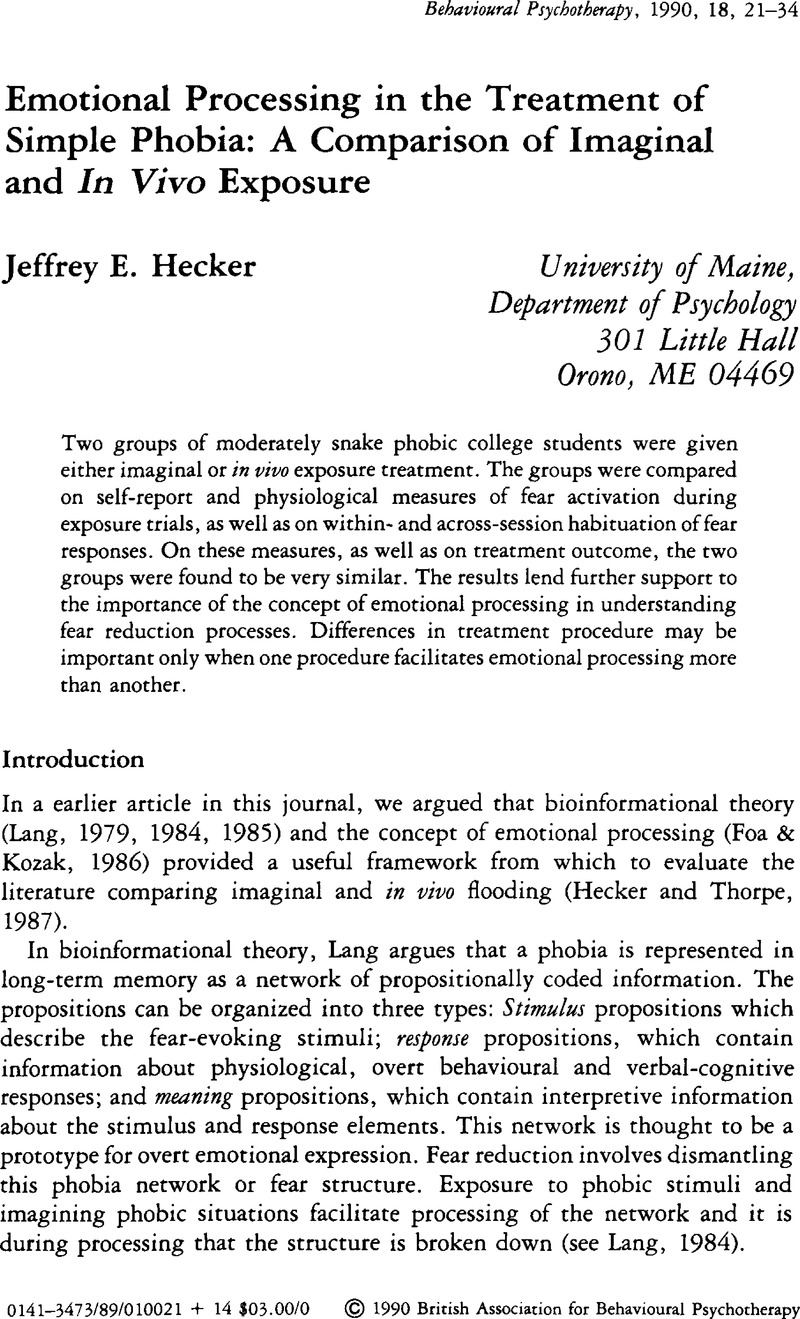Hecker, J. E.,
Port, E. and
Thorpe, G. L. (
1986, November).
Imagery Training, Imagery Content and Type of Exposure: An Investigation of Lang's Bioinformational Theory.Paper presented at the 20th Annual Meeting of the Association for the Advancement of Behaviour Therapy.
Chicago. IL.
Google Scholar 
Comments
No Comments have been published for this article.